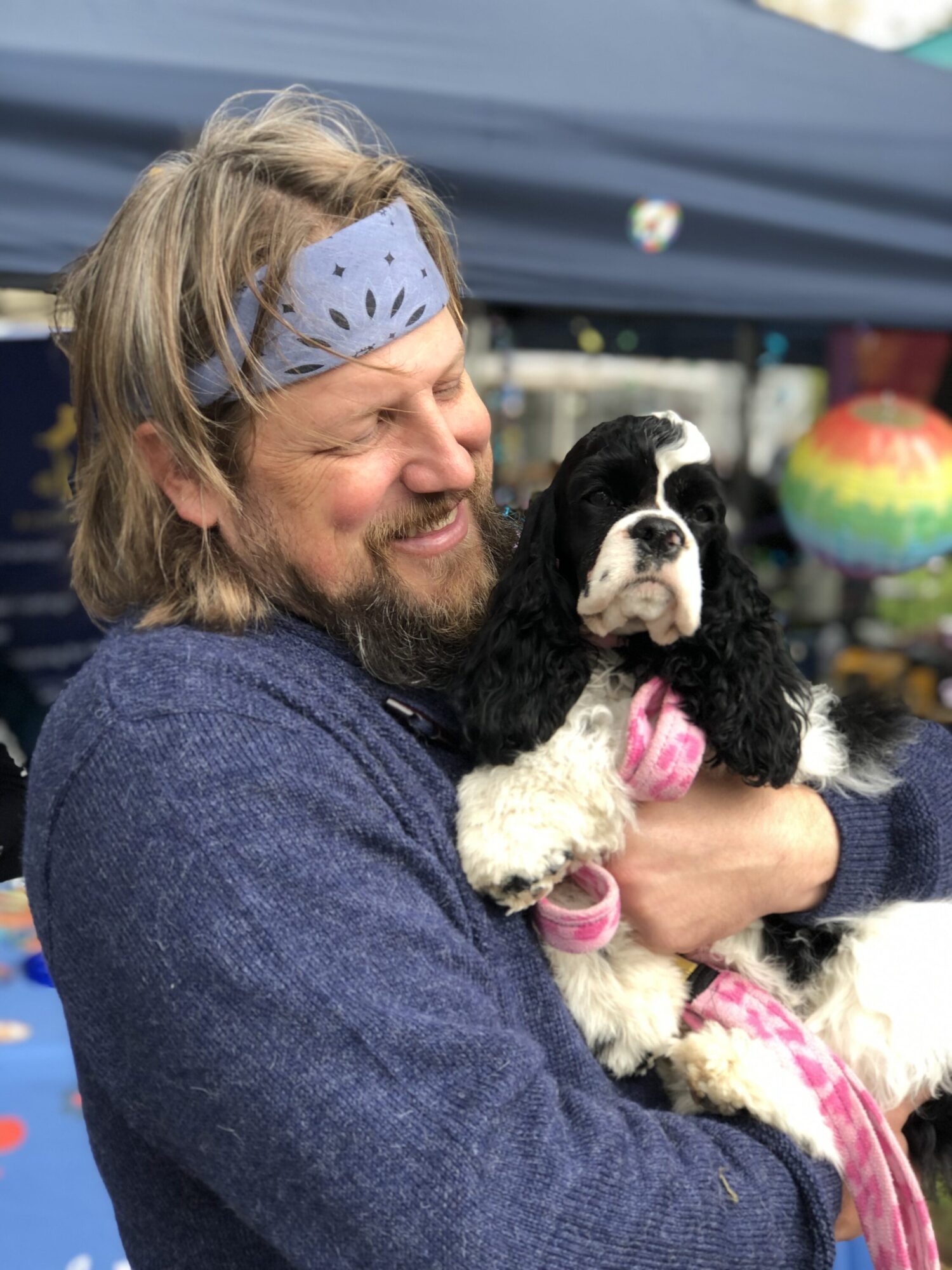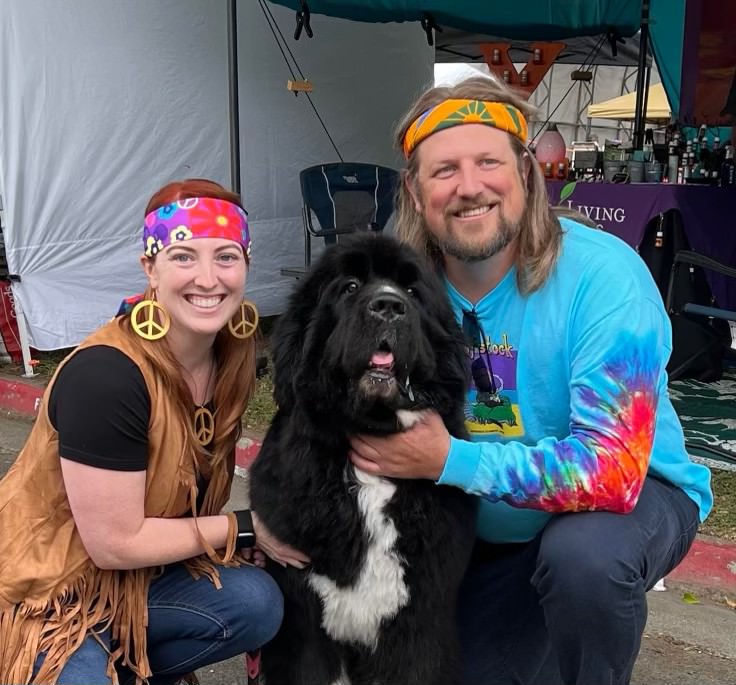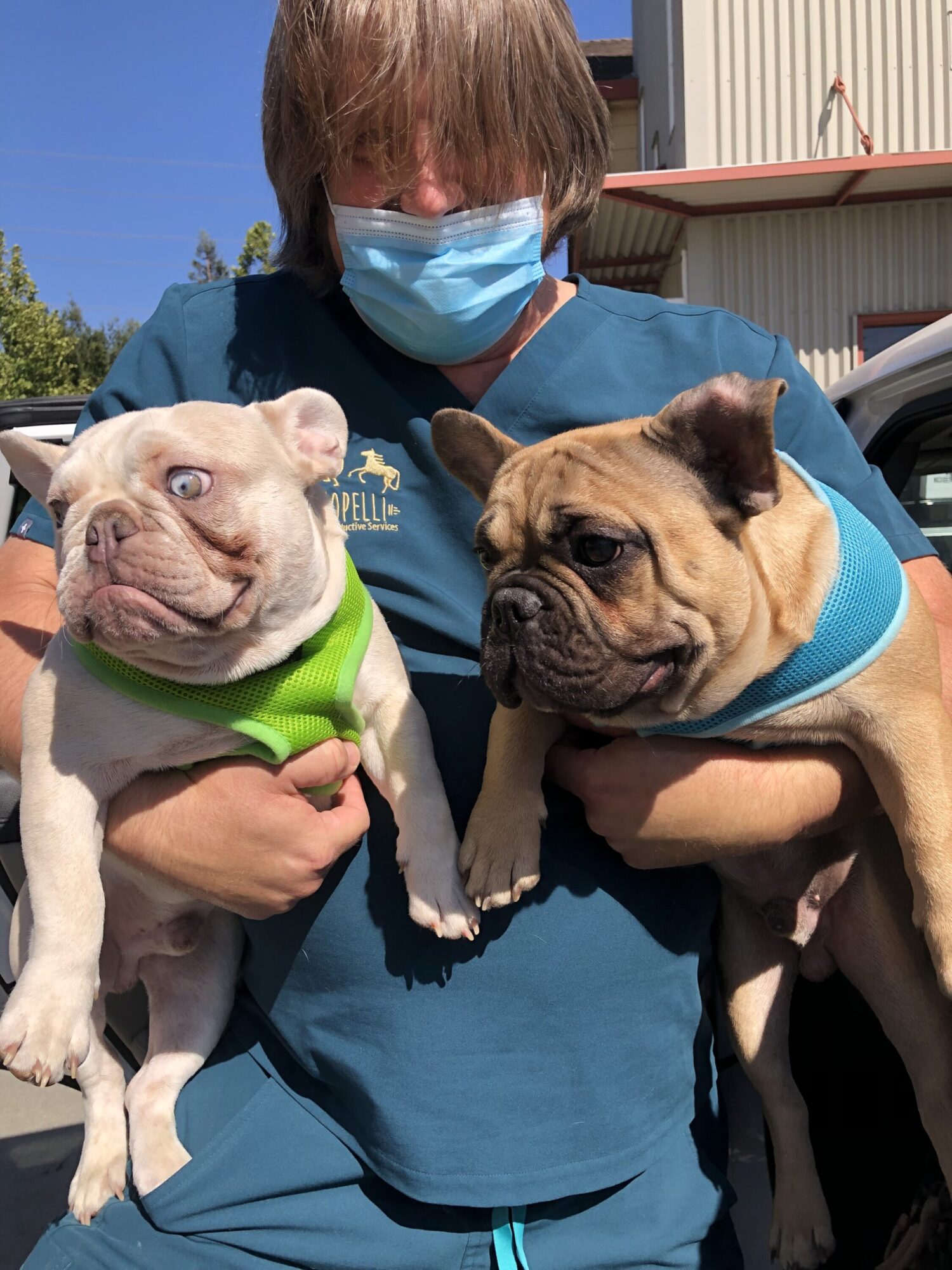I recently wrote about a trip to the Galápagos, musing on the plasticity of life and Darwin’s Theory of Natural Selection. Species form over eons of time based on designs that favor survival and reproductive advantage. The resultant diversity of species is remarkable. Hummingbirds to whales. All of the differences in between serve to help the individual animals survive and thrive. What about our domestic species? What about the diversity we humans have created through our unnatural, artificial selection in our breeding programs? Are there parallels with natural processes? Can we learn from nature?
Humpback Whale breaching in the Galápagos
Black-tailed Trainbearer and Giant hummingbirds in the Ecuadorian Andes
Species exist because of divergent, natural, selective pressures on individual animals over (usually) very long periods of time, thousands to millions of years, depending on the scope and types of differences considered. These natural pressures determine who breeds with whom because they favor traits that give advantages in 1) overall survival and in 2) competition with rivals for mating rights. Traits that give survival advantage from one year to the next are favored because each year survived is another year when passing on your genes is possible. Traits that allow access to mates, such as weapons for battle (antlers, horns, spurs, teeth, brute strength) or more passive demonstrations of fitness (color, vocalizations, ornamentation, territory characteristics) are favored and those possessing them pass on their genes. Whether traits give a competitive advantage or benefit overall survival, they are passed on to offspring and amplified over time in the developing species. Natural and sexual selection drive the physical traits that differentiate and define species.



Humans have utilized selective breeding to create a wide variety of different shapes, sizes, colors, and temperaments in dog breeds.
Domestic breeds have developed using artificial selection (selective breeding) where humans, not nature, determined the traits they wanted to amplify. Initially, our ancestors associated with and bred calmer wolves, sand cats, boars, camels, aurochs, jungle fowl, and wild sheep, goats, asses, and horses. Along with a docile temperament, humans began to selectively breed for other useful traits, such as muscle mass, fiber quality, and milk and egg production. Similar principles were also being used to domesticate and replicate wild plants useful for food and fiber. As success in these areas was achieved, some measure of leisure came with the abandonment of hunter/gatherer practices in exchange for the more sedentary, predictable lifestyle of agriculture. This leisure allowed humans to focus on other traits in their selective breeding programs, some utilitarian, some more trivial.
With the possible exception of poultry breeding, nowhere else is the dramatic power of selective breeding more evident than in dog breeding. Dogs were the first domesticated animal, and the only large, domesticated carnivore, with social selection starting over 30,000 years ago when some wolves were more inclined to hang out around human encampments and benefit from hunting scraps, and in turn benefit the humans as watch dogs and hunting partners. In a relatively short course of time, man has taken that wolf and made it into a Pug.

These Gray Wolves are not domesticated, but they are habituated to humans. One can imagine how, over long periods of time and association, they could eventually move freely and confidently as part of human society.
Perhaps the earliest evidence of different dog breeds is from Siberia, where approximately 9000 years ago humans began selectively breeding dogs for either hunting or pulling sleds. Pottery from Egypt dated to around 4000 years ago depicts sighthounds used in hunting. Art depicting the arrival of the Magyars into the Carpathian Basin over 1100 years ago shows the Puli alongside the invading conquerors. Most modern breeds we know were developed in the 1800’s. Humans have selectively bred dogs for guarding, herding, and all sorts of hunting. We have created incredible variation in skull type, tail morphology, fur consistency and color, and body size. The smallest teacup poodle can weigh only a few pounds and the largest mastiff can weigh over 200 pounds. By some counts there are over 450 breeds of dogs. About 200 breeds are recognized by the American Kennel Club. They represent more diversity in size and shape than any other mammalian species on the planet. And each one of them was bred with a purpose in mind.



It is amazing that from a wolf-like ancestor, humans have selectively bred to create Salukis, Norwich Terriers, and Newfoundlands.
But here’s the thing: how many of these breeds would survive on their own? In other words, in Darwin’s world, how healthy and fit are they? Now, of course, this is not an entirely fair question because these breeds were designed by humans, for humans, and we have every intention of caring for them in a human environment. We are their stewards. But have we been and are we currently being good stewards?
Nature is far from boring. Look at the peacock, the elephant, the narwhal, a tropical reef. But however fancy a species might be, natural selection still favors the most healthy, most fit individuals. How about us in our artificial selections? In our breeding choices are we solely focused on the trait of interest, whether it is head size or coat color? Or whatever esoteric, vain thing we want in our next litter? Nature may be red in tooth and claw, and that is her method for weeding out the weak and favoring the strong: survival of the fittest. But we humans have a conscience and a moral, ethical responsibility to the living things we create. We can choose NOT to create offspring with high probabilities of health issues.

Boston Terriers, as a brachycephalic breed, have remained relatively healthy as breeders have focused on health testing and maintaining a proven form.

French Bulldogs, to the chagrin of responsible breeders, have caught the fancy of many indiscriminate breeders who chase the latest fads in coat color, length, and facial features, ignoring health, to the detriment of the puppies they create and the families who adopt them.
We have the tools to determine which animals are the healthiest. We can selectively breed so that we not only create the “type” we want to represent our kennel, but the most healthy individual puppies possible. With modern tools we can perform health screening tests of the joints, the heart, and the eyes. When we have a breed with a dramatically altered skull shape, as in the brachycephalic breeds, we can make efforts to not compound long palates, small nostrils, collapsing trachea, and loud breathing. We have genetic screening that allows us to avoid breeding dogs that carry detrimental diseases with another dog carrying the same trait. We have taken Nature’s role as selector of the fittest. Are we being responsible in our choices? Or are we being myopic as we blindly chase a phenotype? And do we care that ultimately the poor dog and the adoptive family pay the price of those choices? For those breeders who strive to breed healthy animals to create healthy puppies, we applaud you, celebrate you, and strive to support you in your efforts. For anyone else, we will do our best to educate you and guide you to a more healthy and responsible path.

